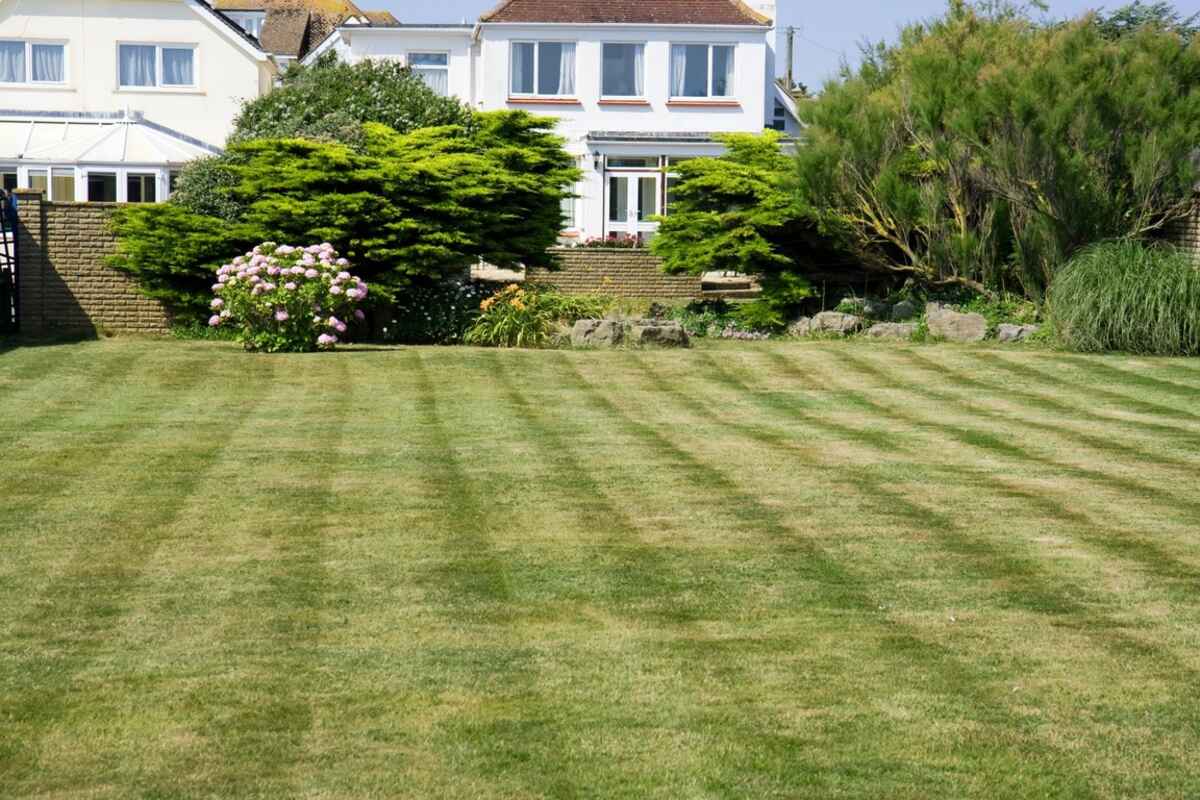
There has long been a debate on the best height to cut the grass when it comes to the final mowing of the lawn before winter. Some say it should be cut lower than normal. Others say it should be cut the same height as usual. We’ll examine both sides of this mowing height debate and let you decide whether the last mow of the season should be lower or at the normal height.
Why Some Say Yes
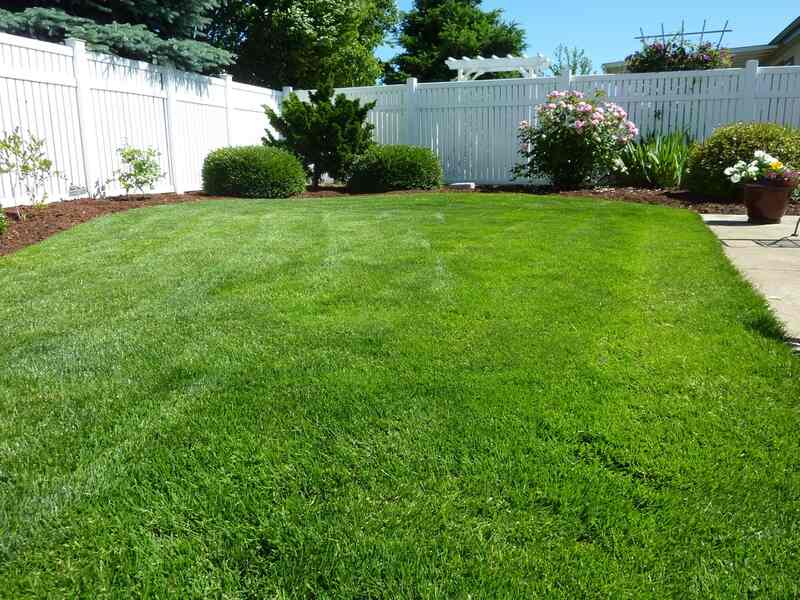
When it comes time to make you final mow of the season, the argument goes, trim low:
- It prevents the laying over of grass during the winter.
- It helps prevent snow mold (a fungus that occurs under the cover of snow) by denying it the long, wet grass it needs to develop. The principal snow mold diseases are Microdochium patch, Coprinus snow mold, Typhula blight, and snow scald.
- It is an organic way to fight fungal growths of winter, no fungicides required. It should be followed by mowing low with the first cut of spring.
- There is less growth that needs to be pushed aside by new grass in spring.
- It discourages meadow mice. The furry pests, also called voles, leave tunnels in your lawn you won’t find until after the snow cover melts.
- Aesthetics: “A lawn just looks neater if it has that close cut before the snow settles down,” writes respected New York Times gardening columnist Joan Lee Faust.
- Allows more sunlight to reach the soil, which means warmer soil temps and an earlier green-up in spring.
- Removes dead grass blades and debris
- A natural way to encourage healthier grass, avoiding the use of chemicals
- Reduces thatch levels
Those making the argument recommend these guidelines:
- Instead of following the one-third rule, cut the lawn by half. So instead of going from 4 inches deep to 2 ½, go from 4 inches tall to 2 inches.
- Be careful not to cut it too low; those low patches will die before spring
- Mow until all the leaves have fallen from the trees
- Mow until the grass has stopped growing for the year.
Why Some Say No
Setting mowing height too low can damage your lawn, other experts say:
- Keep it normal when it comes to mowing height. Turf should neither be cut short nor left long going into winter.
- The root systems become shorter and smaller, limiting the grass’ ability to pull in water and nutrients from the soil. This is because there is a direct relationship between the grass height and the amount of roots it can maintain. Lowering that grass height is the direct cause of the lessened root system.
- Mowing too close allows sunlight to reach weeds that otherwise would have been covered by the canopy.
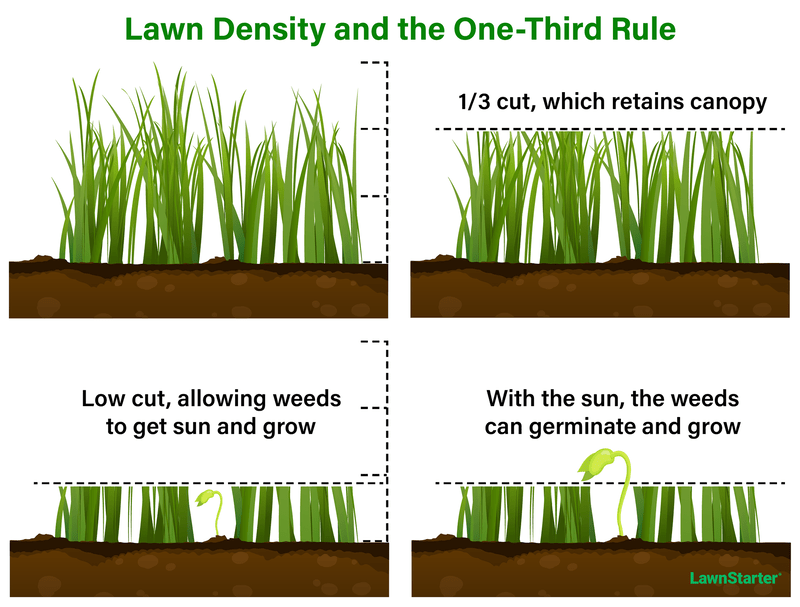
- Low mowing reduces the area available for photosynthesis, which takes away from the vigor of the lawn.
- Aesthetics: Lawns “look much better” when they are higher (take that, lovers of short grass), according to the University of Illinois Extension.
The One-Third Rule: Learn It
For most of the year (with the possible exception of the last mow) the One-Third Rule is sound advice. The One-Third Rule says never remove more than one-third of your grass on any cutting.
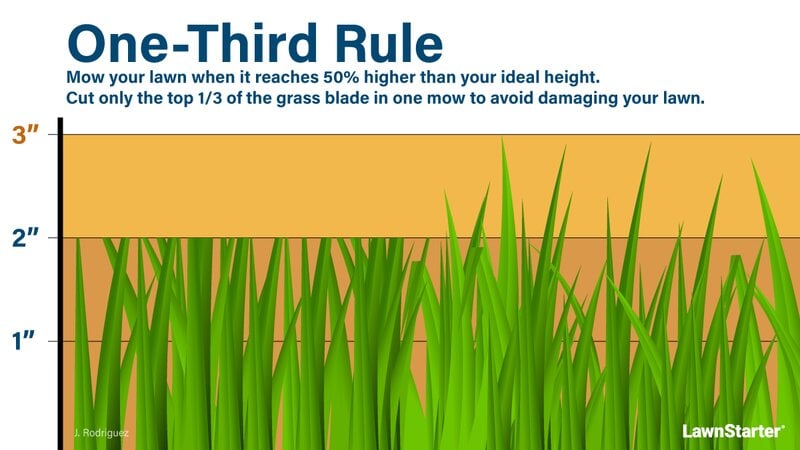
Adhere to the one-third rule, and cut your grass down in increments. This will reduce the amount of stress you put on the grass as it grows throughout the year.
Mowing Heights by Type of Grass
The University of Minnesota Extension Service says homeowners should keep mowing grass at the proper mowing height until it stops growing. Follow these proper mowing heights for healthy grass during spring, summer, and fall.
| Recommended Mowing Height by Grass Type | ||
|---|---|---|
| Grass species | Recommended mow height (inches) | Mow when it reaches this height (inches) |
| Annual ryegrass | 1.5 - 2 | 2.25 - 3 |
| Bahiagrass | 3 - 4 | 4.5 - 5.75 |
| Bermudagrass (seeded) | 1 - 1.5 | 1.5 - 2.25 |
| Buffalograss | 1 - 2 | 1.5 - 3 |
| Centipedegrass | 2 | 3 |
| Creeping bentgrass | 0.5 inch or less | 0.75 inch or less |
| Fine Fescues | 1.5 - 2.5 | 2.25 - 3.75 |
| Hybrid Bermuda | 0.5 - 1 | 0.75 - 1.5 |
| Kentucky bluegrass | 2-3 | 3-4.5 |
| Perennial ryegrass | 1.5 - 2.5 | 2.25 - 3.75 |
| St. Augustinegrass | 2.5 - 3 | 3.75 - 4.5 |
| Tall fescue | 1.5 - 3 | 2.5 - 4 |
| Zoysiagrass | 0.5 - 1 | 0.75 - 1.5 |
| Sources: University of California-Davis Integrated Pest Management program, University of Georgia-Augusta Richmond County Extension | ||
Cool-Season Grasses
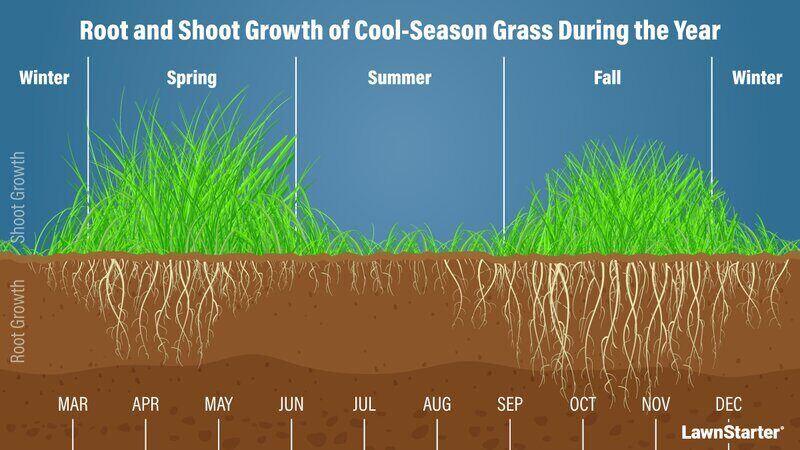

“With cool-season turf grasses like the blue grasses, rye grasses, and tall fescue, I recommend mowing at the same height that has been done through the summer and fall,” says Karl Danneberger, Ph.D., professor at the Department of Horticulture and Crop Science at The Ohio State University. “The key thing is to keep mowing until you no longer are taking off clippings.”
The University of Missouri Extension recommends that cool-season grasses should be mowed at the same height “until growth stops” before winter.
The University of Nebraska Extension agrees, stating, “Never remove more than one-third of the total canopy height at one time,” even as you prepare for winter.
Warm-Season Grasses
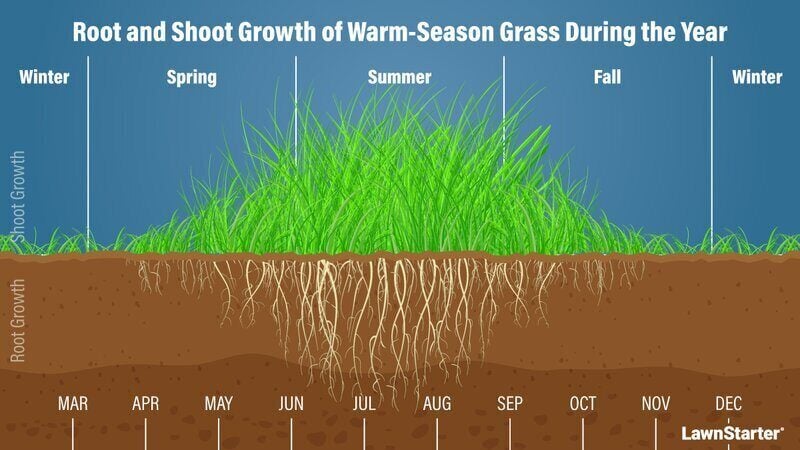
Warm-season grasses such as Zoysia and St. Augustine might benefit from a little more length, but should be kept within the recommended height range, according to the University of Tennessee Extension: “Higher mowing heights within the preferred mowing height range for a particular species favor the development of strong roots and rhizomes.”
Bermudagrass is not shade-tolerant and is intended to be cut shorter (as short as one inch), according to the University of Clemson Extension.
“On warm-season turfgrasses like Bermudagrass, I would begin to raise the mowing height up a little,” says Danneberger. “This would be especially important in the more northern region of its adaptation going into fall. A slightly higher height of cut will enhance the plant’s ability to tolerate winter injury a little better. Also…mowing short going into winter may inhibit fall photosynthetic activity.”
Put Proper Mowing Practices First
Tired of all the minutiae? Keep this in mind: Good lawn care practices matter more than trying to get your grass height within a millimeter of some golf-course ideal.
That means:
- Keep a mowing frequency that never lets the grass get too tall. You want to hit that balance between encouraging root growth (good) and encouraging weed heads to seed (bad).
- Leave your grass clippings in the lawn as mulch. Mulching beats bagging because the cut grass blades return valuable nitrogen to the soil.
- Vary your mowing pattern. Grass leans in the direction of the lawn mower, so it eventually becomes uneven. Mowing in a different direction also prevents you from wearing ruts into the lawn. That’s a particular issue for heavy riding mowers.
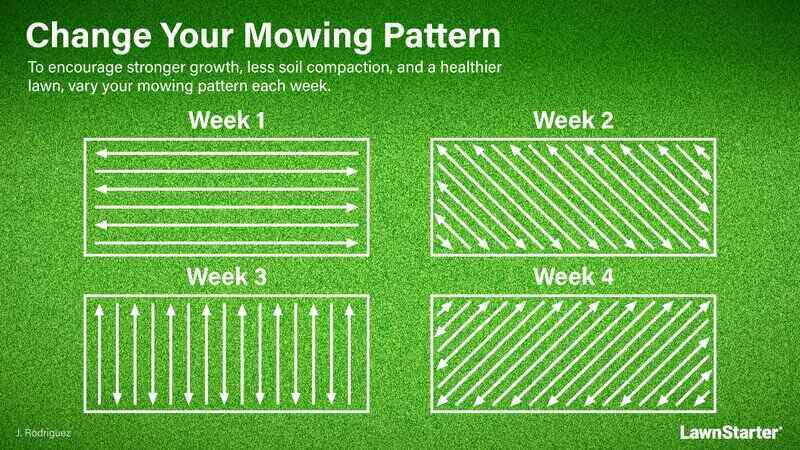
- Sharpen lawn mower blades regularly. Dull blades damage lawn grasses, as they pull and shred rather than cut.
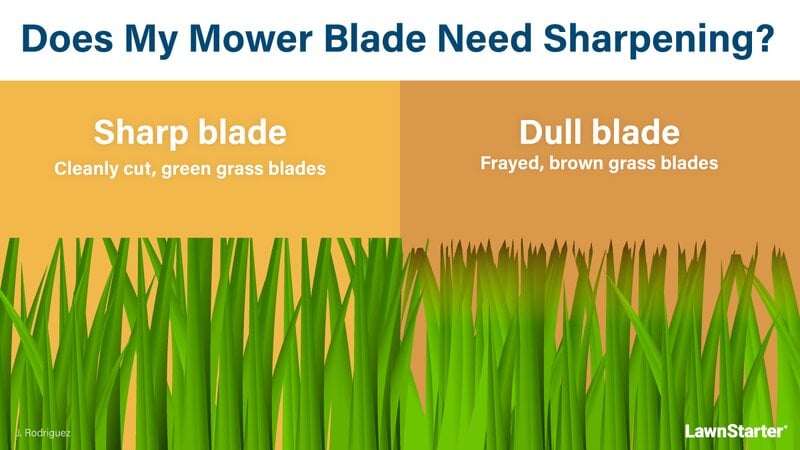
- Water infrequently, but deeply to encourage a deep, vigorous root system.
Once the grass stops growing, winterize that lawn mower before turning your attention to the leaf blower or snow plow. Your lawn will high-five you with spring green.
FAQs
You should never mow your lawn in winter if you can help it, as you could damage the dormant grass. However, if you absolutely must mow during winter, do so when the grass is dry and frost is not anticipated for at least 48 hours.
Keep on mowing until the grass stops growing. For most places, the rule of thumb is that it comes when temperatures during the day fall below 50 F, usually late in October. You can read about more factors affecting this in our article When to Stop Mowing the Lawn Before Winter.
Yes, mowing low helps prevent snow mold and excessive thatch, both of which contribute to disease in the lawn.
Yes, cutting wet grass isn’t recommended. There aren’t many days available at the end of the year to mow the lawn, and a number of them can be wet (and all of them cold). But you will have to pass up the temptation to mow despite the wetness. When wet grass is cut, it can result in ragged edges that are prone to fungal infections. Plus, the roots can be pulled out, leaving bare spots.
Go Low? Yes or No?
There is a debate on what height you should use on your final mow of the season. There was a time when the standard advice was to cut it short for winter. Now the best advice is to cut it the same as always.
But make no mistake: It is your lawn. YOU should make the decision on what to do with it. Don’t let it go. Take action and make a decision on what length for the final mow of the season is best for your lawn. If you’d rather have someone else do the work, call a local LawnStarter pro to make the final cut.
Main Image Credit: Pxhere